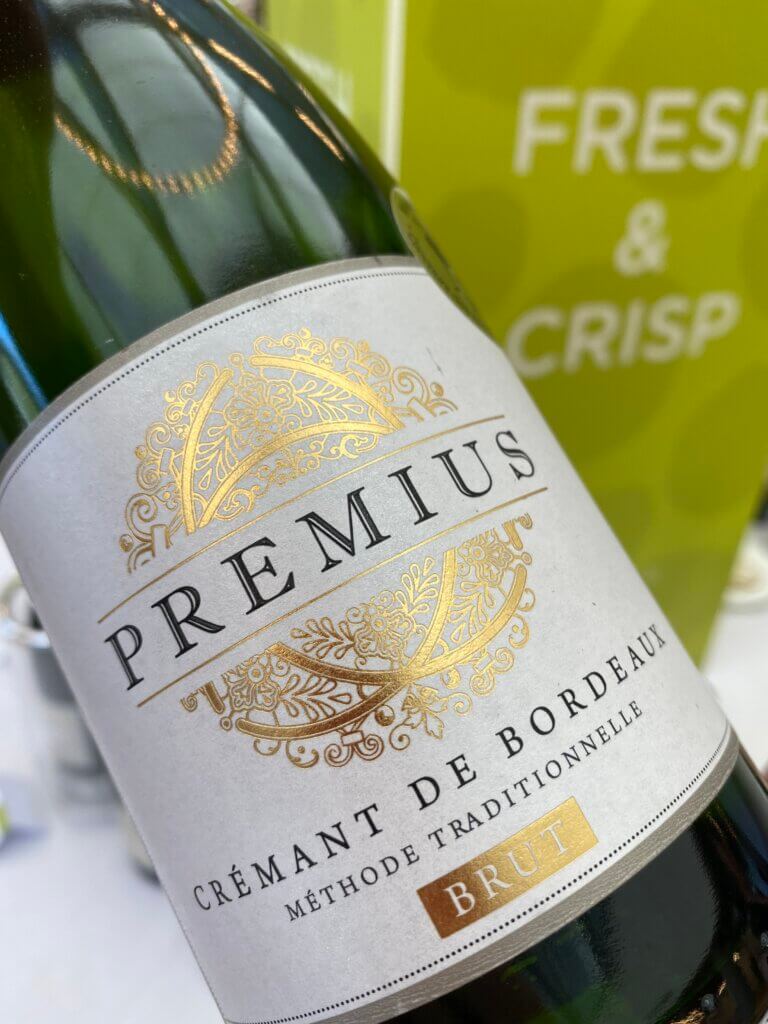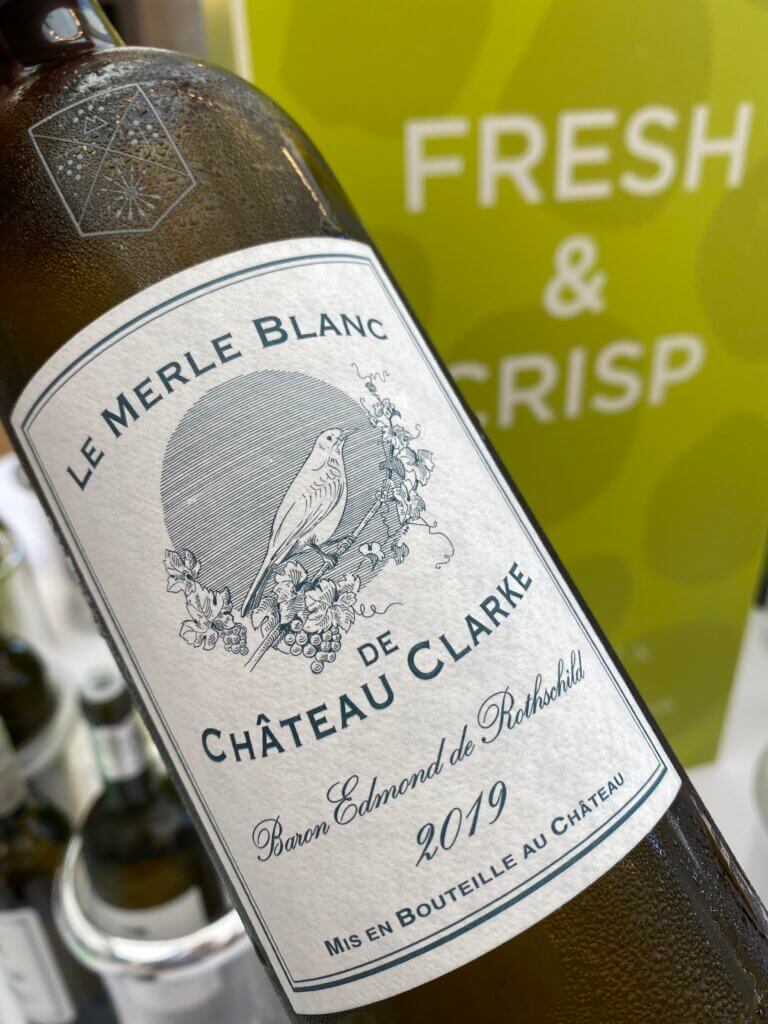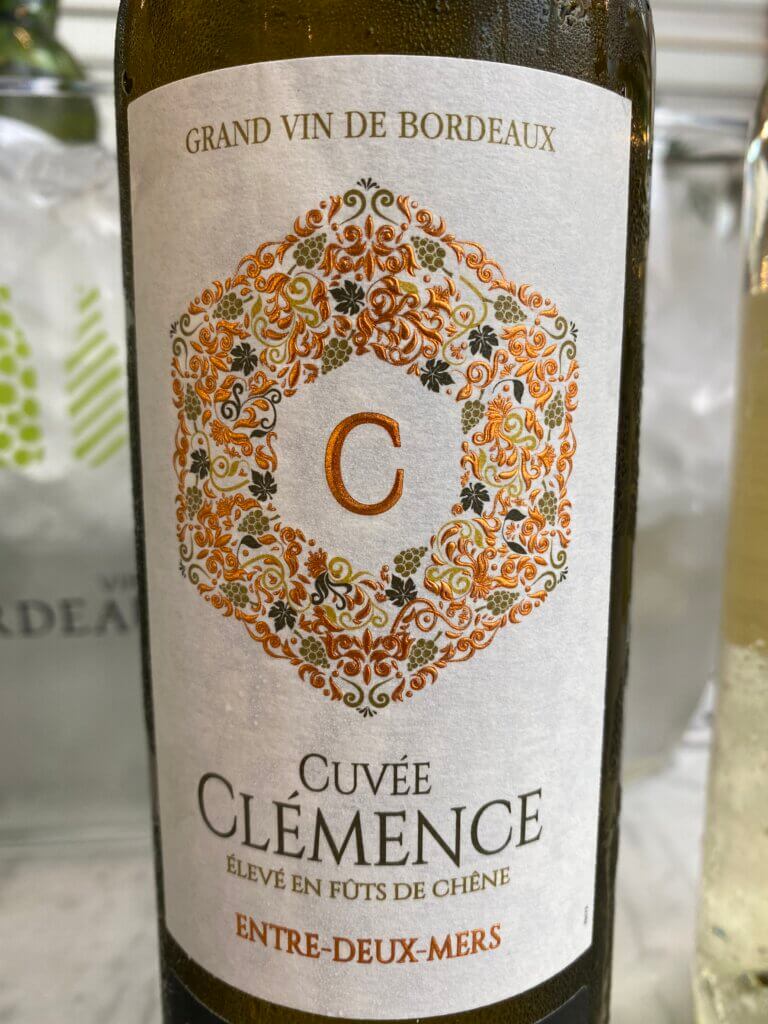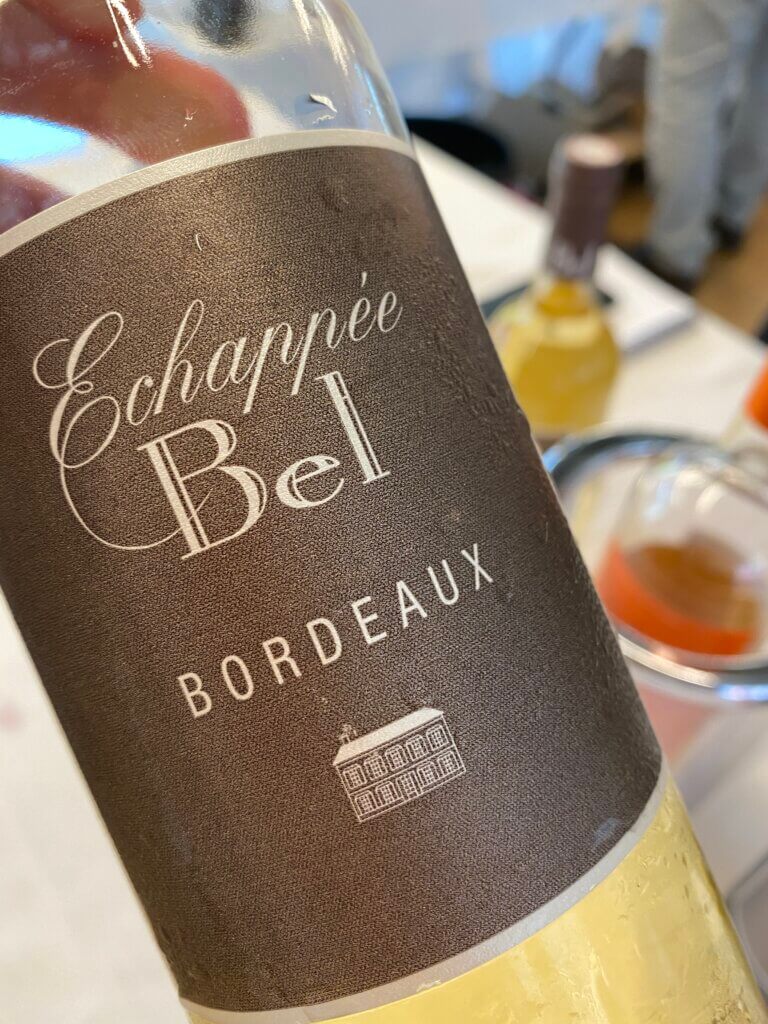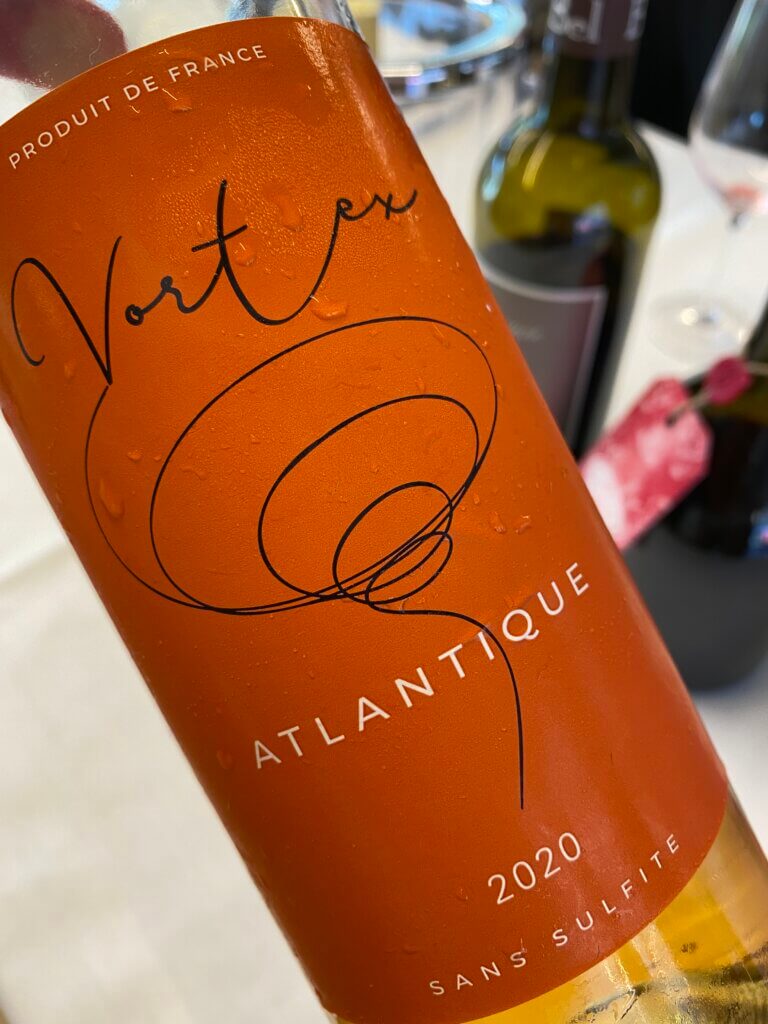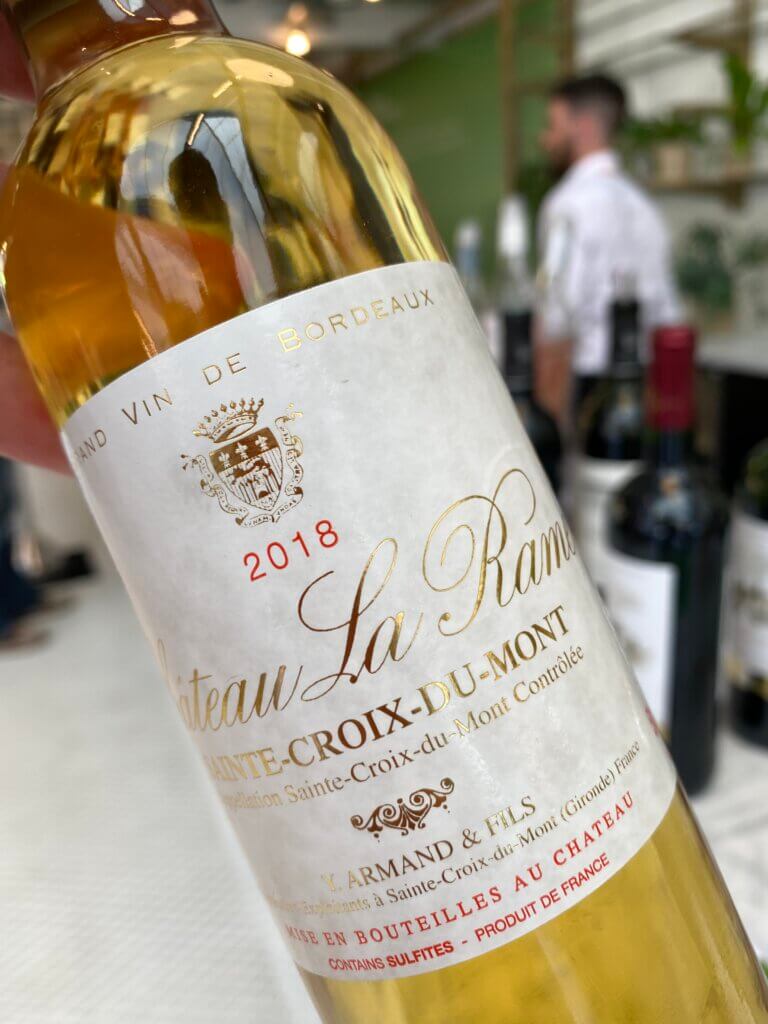- Season 3 Trailer
- Fake Booze
- English Wine: Now What?
- How to Buy Wine
- Bordeaux’s White Bank
- We’re Making Wine for Hope & Glory
- WTAF – Wine’s Alt Format Warriors
- The Oz Clarke EXCLUSIVE!
- Our Wines of the Year
- Investing in Wine
- A Drink to Dry
- Coffee Dorks Meet Wine Nerds
- Burgundy 2020 Brief
- Getting to know the Côtes de Bordeaux
- The New Champagne
- The Magical Science of Taste
- Boxing Clever?
- Georgia 4 Ukraine
- On Natural Wine
- Fake Booze 2
- Adventures in Dosage
- Tasting 1982 Bordeaux
- Armenia’s Ambition
- The World’s BIGGEST Wine Competition
- Wine from the Arab World
- Why Bother Matching Food and Wine?
- Wine 4 Curry
- Wine 4 Roast Lamb
Summary
Did you know Bordeaux used to be mainly white, not red wine? And that there’s a universe of delicious diversity (and great value) to be discovered among the dry and sweet whites of Bordeaux (not forgetting the fizz)?
This is the second part in our mini-series in association with the Bordeaux Wine Council (CIVB) and we dive headlong into the fascinating world of white Bordeaux. We talk to the brilliant Laure de Lambert Compeyrot of Chateau Sigalas Rabaud as well as ‘renegade’ winemaker Olivier Cazenave of Chateau de Bel. Bordeaux expert Jane Anson also makes a cameo appearance.
The episode also features the ULTIMATE breakfast cocktail (involving Sauternes and blood orange), masochism, robots, ‘heavy metal’ orange wine, the 2021 vintage, earthworms the size of snakes, rescuing Muscadelle, loving ‘the game’ and some amazing value wine tips. By way of bonus, both Susie and Peter break into what might be loosely described as ‘song’ at different moments.
NB: To see the Running Order/Chapter Headings, simply click on the ‘bullet list’ icon on the green embedded player above.
Starring
- Jane Anson
- Laure de Lambert Compeyrot of Chateau Sigalas Rabaud
- Olivier Cazenave of Château de Bel
Wines
- Echapee Bel Blanc NV (£15, PipWine.co.uk)
- Premius Cremant de Bordeaux Brut NV (£10-12, US$15-20)
- Calvet Ltd Edition Sauvignon Blanc 2020 (US$12 or £9, Waitrose, Ocado, Coop)
- Cuvee Clemence 2019 Cheval Quangard (£9.16 on offer at Vinatis, €10)
- Le Merle Blanc de Chateau Clarke 2019 (£26.50, Davis Bell McCraith, US$35-40)
- La Sémillante de Sigalas 2015 (£27.95 Philglas & Swiggot, US$25)
- Chateau La Rame 2018, Sainte-Croix-du-Mont (£13 for 50cl, Majestic; US$20-25)
- Sauternes Lieutenant de Sigalas 2015 (£24.99, Harrogate Wines)
THAT ‘pizza tarte’ video…
Jane Anson cameo
Jane Anson (JA): I’ve been a big fan of Bordeaux whites for a long time. If we go back to that question: if you want to buy Bordeaux at €5 or £5, I’d go white. At the lower end of the scale, getting quality without having to spend more money, white is probably the most reliable kind of wine you’re gonna get in Bordeaux. Because the way they make it now, there’s so much wine been done, on keeping those aromatics beautiful and precise, Denis Dubourdieu who’s sadly no longer with us, did so research that got out to winemakers and helped them understand what to do. So there are some brilliant wines. And if want a more foodie style or structured – go to Pessac-Leognan. If I had to pick one appellation to drink for ever and I wasn’t allowed any others, I’d probably go Pessac – because you have great whites as well as great reds. And there’s a balance in them but also a sexiness in them, they’re not afraid to make a wine that if you took to a dinner party and gave to your friends, you’d know they’d like it and feel it was a bit of an occasion. Like Smith Haut Lafitte white, or Hauts de Smith white, the cheaper one, I love that wine and I always feel confident that, if I open that wine, with friends who aren’t wine lovers, they’ll say: oh, this is an awesome wine, what is it?!
Peter Richards MW: And what about the sweet wines?
JA: Well, OK. With the best will in the world, they still need to find a way to engage with consumers, to get back to being relevant. They’re beautiful wines, made in this artisan style, which is not for the fainthearted. And the poor things, it seems like every year recently, with such a changeable climate, very wet then very dry, it’s hard for them. Because they need bit of damp at the end of summer, the mists for noble rot. So we’re seeing again and again very small yields. And they were already small yields. So in the best years you’ll find you get about a bottle of wine per vine for red, but one glass of wine per vine for sweet. But even today, they’d be lucky to get that. So many years they’ve been getting 5hl/ha yields. Just not sustainable. So I really hope so much they find a way to connect. And we are seeing: best region of Bordeaux for wine tourism. We’re seeing great hotels in Sauternes, more restaurants going, I saw just recently that Guiraud is doing a farmers market for producers across Aquitaine. They need to do that, to get people to Sauternes, because when people taste them, people invariably fall in love with the wines. You need to have a few good cocktails as well – one of my other recommendations would be: a bit of Sauternes, some champagne and blood orange juice, put them together with a bit of ice, a slice of orange, absolutely brilliant. We just need to be more fun about how we approach it!
Laure de Lambert Compeyrot interview
Susie Barrie MW (SB): What do you feel about the white wines of Bordeaux?
Laure de Lambert Campeyrot (LL): I’m very excited. Because Bordeaux was white before. Bordeaux before 1977 was white. Today really red. When people think Bordeaux they think red. For me, it’s something like to re-appropriate my history. That’s why I was very excited to explore Semillon, an old forgotten grape variety actually.
SB: You’ve been described as a ‘rupturiste’ or disrupter in Sauternes. Why is that?
LL: [Laughs] I like to explore new solutions! When you’re in a great terroir, you want to try many things. At Sigalas Rabaud we can do everything. It’s like when you have a nice car, you like to push it to see what’s under the hood. For me it’s exactly the same. I like to tow to the border but I never compromise with quality. I never go out of the border.
SB: As part of this disrupting, you’ve introduced a no-added-sulfur wine, Le 5 de Sigalas-Rabaud, one of your sweet wines. Tell us about your approach, and rationale with this wine.
LL: Always in the same sense. To explore. What a great terroir can give. Like many people in Bordeaux, I’m very interested in ecology, working with less inputs, but I also have a classical approach to wine. Wine doesn’t make itself. I don’t feel like a naturaliste. I’m very pragmatic – quality always above all. So that’s what I try to do with Le 5. Something new to explore. With the magical botrytis.
SB: Has it been successful not adding sulphur?
LL: It’s different. There’s no potential of ageing, that’s sure. The wine oxidises very quickly. But I like the aromas in the beginning. It’s like when you were in front of your tank….you smell citrus, exotic fruits, it gives acidity to the wine. It reflects our original terroir too. But in another way.
SB: So le 5 is deliberately a younger drinking wine.
LL: Yes, it’s like a rosé. You have to drink it very fast!
SB: Sauternes has been described as, ‘A wine made by masochists, drunk by hedonists.’ What do you make of that description?
LL: [Laughs] For me it’s absolutely the opposite! If you consider that working more, in more complicated conditions: yes. It could be masochism. But when at the end you produce something incomparable. It’s exactly the opposite. In the end you don’t get pain but instead an intense pleasure. So no, I’m not at all masochist! Really hedonist.
SB: Why should people drink more Sauternes?
LL: Just because it’s something delicious! An extraordinary product with wide aromatics. A wine of emotion. A nice value for money! A wine that’s easy to match with multiple dishes, at all ages. Young Sauternes as an aperitif, mature with a dish, old with cheese – there are so many reasons to buy and drink Sauternes.
SB: Your favourite match?
LL: Yes. It’s very traditional but with Roquefort. I don’t like too much dessert but old Sauternes eg my 2000 with Roquefort, today, it’s a nice time.
SB: Sounds too good! You also make dry whites, including La Semillante, an oak-aged old-vine-Semillon. Tell us about your dry white wines.
LL: La Sémillante is a great love story! This old Semillon in Bordeaux, planted in high density on great terroirs, are something unique. For me it was just une rencontre, a meeting in my cellar. I wanted to explore to try to produce a dry white wine. And the first time, 2 barrels, one of Sauvignon, one of Semillon. And every day I tasted the wine and I saw that I had something unique in my cellar. I didn’t expect that. That’s why I asked some people to open their cellar, I was very lucky because I tasted very old Semillon, 1954 dry from Chateau Gilette, an old Chateau Fieuzal. And it was absolutely exceptional. And I understood Semillon could be absolutely outstanding. Today, of course, people are working more and more on dry white wine. Because they are great wines.
SB: They are indeed. So you now make that regularly, La Semillante. How long have you been making it?
LL: I started 2009. In the beginning, it was a blend. Now 100% Semillon. But always a blend: 2 maturities: citrus and exotic. I wait before the two harvests.
SB: You’ve been focusing on sustainability, and experimenting with biodynamics, is that right?
LL: When you’re a wine grower or farmer. You’re interested in your soil. Sustainability of your culture. In your plants, heritage. You explore always different ways to work in relation with nature. Like 65% of the Bordeaux vineyard we have been awarded high environmental value (HVE), the highest level, we work and do research in vineyards with neighbours. We’re very interested in agro-forestry, like Cheval Blanc today. And we follow very closely young companies working in robotics, drones etc.
SB: But is it not slightly tricky in a microclimate like Sauternes, perfect conditions for botrytis, moist/damp, is that not really challenging with biodynamics and organics to manage that?
LL: Yes it is, of course. So challenging. That’s what I like. You ask if I’m a masochist…I think I like the game. I like the challenge. Perhaps to produce Sauternes you must be like that.
SB: You’ve also opened a guest-house and have just won a major award for wine tourism. How important is tourism to the future of your estate, the Sauternes region and Bordeaux in general?
LL: We have a wonderful place. A very beautiful, we have on the road of Graves and Sauternes, an incredible wealth of heritage: many castles. An exciting ecosystem. And tourism is an economic opportunity for the whole region. Post-covid, people are happy to spend time in a nice landscape. We are so happy to share and have good moments with wine and finally: what is a wine? That’s why we produce wine. To share with people, with friends.
SB: A lovely thought. Thank you Laure.
LL: You’re welcome. Thanks to you Susie!
Olivier Cazenave interview
Peter Richards MW (PR): You’ve been called, ‘a renegade’ and, ‘perhaps the most radical winemaker in Bordeaux.’ You’re clearly a man not afraid to defy convention and do new things. What motivates you to do that?
Olivier Cazenave (OC): Only the pleasure! It’s not for communication, not because I’m angry against somebody or something. I don’t care really about all that. It’s just because I have some ideas, sometimes too much. But sometimes I have good ideas. So I try to bring them to a result. That’s why I don’t care the weight of the tradition, it’s not for me.
PR: You manage the estate along biodynamic lines since 2016. How has that changed things for you, for the land, and for the wines?
OC: That’s a big question! For me: a lot. Because I really know with the pleasure of working and walking in the vineyards. Because it’s more healthy for me and for my surroundings. For the soils, it’s incredible. It was funny, this summer, in June, a lot of rain in Bordeaux. We’ve never seen that for 25 years. All the estates around were under water. But here no. Because drainage. The soil is much more living, we have earthworms like snakes! They make a very good job in the soils plus many plants. So the drainage is fantastic. So not just for the rain – for oxygen when the soils need it, for when roots need water or to go deeper, it’s good for everybody. The vineyard is more healthy, the colour’s changed, the green is different (of the leaves) comparing to my neighbour. It’s not the same green. It’s not too pale or too dark, it’s between, maybe it’s the natural greenness of the leaves. As for the wine – I don’t know. It’s so difficult. I’m too involved. For my wine, I cannot say. Perhaps for some wines that I tried blind, I can say: OK, this wine, at least organic or maybe biodynamic. I have two sensations: firstly, purity, very good comment. Sometimes it’s not a purity but a naturality, that means some faults but some qualities bigger than the faults. Not natural wine – naturality is different. But it’s difficult. It’s a rule: when you do biodynamics, your mind has changed so you make wine differently. So it’s difficult to analyse.
PR: I understand what you’re saying. It’s difficult. And fair enough not to be drawn. But, talking about your wines, it’s notable in your wines that you’re aiming for lower alcohols, food-friendly wines that aren’t showy but are very drinkable. You also say you make, ‘the opposite of star wines’. Tell us more about your approach in that sense.
OC: As I said before, I make the wine I like. So I don’t care about Wine Spectator, what they expect. I don’t care. All of that. I’m very happy if I have a good score, for sure. But I follow my taste, my wines have changed over 20 years. Because I’ve changed. So I make the wine with lower alcohol, maybe also less ageing, more for others, I go more on the extremes, because of experience and so on.
PR: Echappée Bel in both white and red are non-vintage wines. That’s pretty rare, Bordeaux’s a region where it’s all about the latest vintage! Why do that?
OC: There are 3 reasons. Main one is I’m fed up with the vintage in Bordeaux. The holy vintage. So I say: we erase the vintage. Like in Champagne! We never ask a champagne producer: why don’t you put the vintage? Because it’s the tradition. So I follow this tradition. Secondly, sometimes as in this particular range, I want a result. I’m not working on the terroir, I want a result in the mouth. So sometimes I blend vintages, like in Champagne. Sometimes you have 1-2-3 different vintages in the bottle. Third reason is: I don’t remember. Yes, it’s to change from the vintage, it’s too demanding now. So they will not want a 2020 wine cos it’s not very good? No. We can make good wines because we work hard. We won’t sit on our stock and say OK: let’s wait for next year.
PR: The Echappee Bel Blanc is not like other Bordeaux whites – it’s mostly Muscadelle, with a bit of SB. Why did you go down that route?
OC: First reason: I don’t like Sauvignon in Bordeaux! I don’t like the style. I like some but very few. For me Sauvignon must be in very specific terroir: calcaire. Limestone. On that and with good ripeness. OK, I have my opinion on that for Bordeaux. So I don’t like Sauvignon. Semillon is OK but I discovered Muscadelle in Dordogne with Luc de Conti. I really really like this wine and I heard that there’s lots in Entre Deux Mers and Sauternes but they don’t like the grape, because it’s not so easy to ripen, and the wine is interesting after 1 or 2 years of ageing, even in stainless steel tank. So it’s not for Bordeaux people because normally by the end of July you’ve sold all your last vintage. So they don’t know what to do with the grape so they don’t renew the vineyard with Muscadelle, they give up. And I try to defend that, I try to show all the possibilities in Bordeaux, which were very traditional, and that’s an important point: between the two World Wars, in Bordeaux there were registered more than 13 white grapes. So now we have 3 or two really. So that showed that historically Bordeaux was producing much more white than red, until the 1950s. And we had many grapes like Chenin, I have Chenin in my vineyard just outside the window. They were here before! We had good soils for that. Just to explain we have not just Sauvignon and Semillon. We need to defend the patrimoine.
PR: The heritage. You’ve also just started making an orange wine ‘Vortex Atlantique’. Tell us about that and why you’re doing that in Bordeaux – again, something a bit unexpected…
OC: OK, because I already do one in Roussillon with a friend. But it’s a very heavy orange wine, 3-4 weeks of maceration. Wow. 15%. It’s a heavy metal orange wine! Grenache grey and white grapes. Very tannic. My idea was to make something lighter, more elegant, and also more accessible. Because I don’t like – these wines are fashionable at the moment. Some people make wine at 10 euros but then say this [orange] one will be 20. Why? You don’t know. Not a lot more work than a red. So my idea was to make an orange wine at the same price as Echapee Bel range. Because it’s the same work. And it’s not because it’s fashionable that I will double my price. That’s the best way to kill the product. And it’s funny to change. I have many other projects – I’m making a rancio in Muscadelle, I’m making a black and white grape blend (Merlot/Semillon). So many projects are in my mind or in the cellars already, just because, I come back to history: they did the same before! It was OK, it was working. So why not do that now again? To change. I’m curious.
PR: So the future of Bordeaux may be a little bit white?
OC: Yeah. A better respectability for the whites, that’s what I expect.
PR: Olivier, thank you very much indeed!
OC: Sorry, hope to meet you again soon for real!

